sound67
Member
- Joined
- Jan 31, 2023
- Messages
- 58
- Likes
- 51
After successfully implementing the tube-hybrid mini amplifiers Aiyima T9 and T9 Pro (and an unsuccessful test with the Nobsound B100), I was curious to give a tube-less mini amplifier a try, and my choice is the Loxjie A30, which qualifies as an all-in-one budget solution with enough inputs (5x) for my setup and a headphone amplifier on top (which I don't really need). It's a 2.1 integrated amp that you can connect to an active subwoofer, like the other two.
In practice, the A30 has one input less than the T9/T9 Pro, as the RCA analogue input and the coax cannot be used simultaneously. One of the RCA inputs is used for either coax or the analogue right channel. Never seen such an implementation before.
The amplifier arrives in a prosaic but sturdy box carton with the model name and a sketch of what the unit looks like. Inside there is a rubber foam filling with three compartments for the unit itself, one for the remote control, and one for the remaining accessories (mains adapter, USB-A to micro-USB cable for PC connection, and the BT antenna).
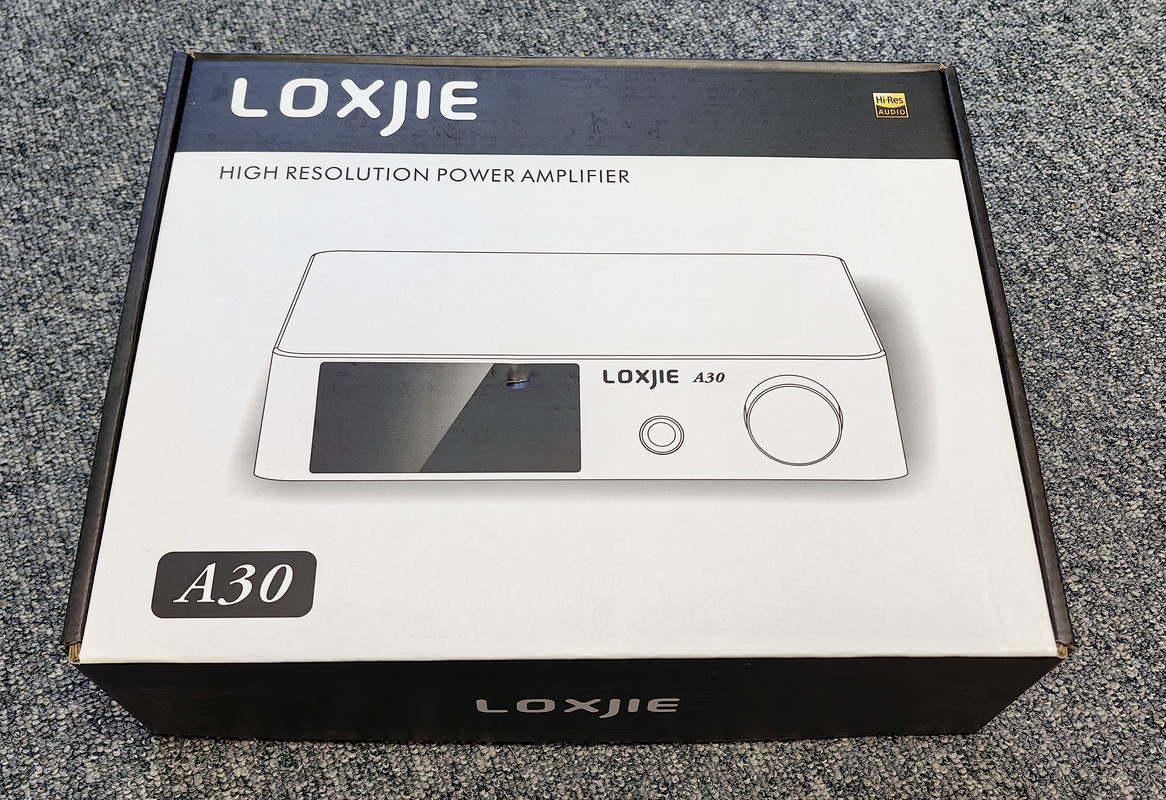
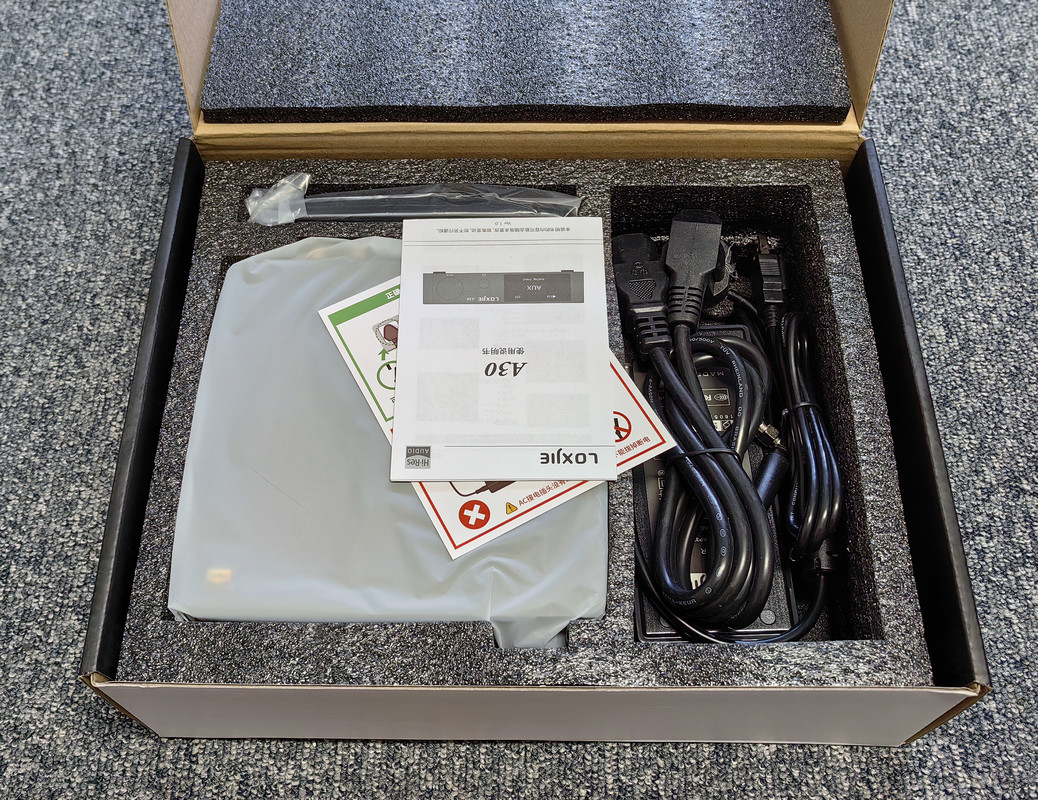
There are no audio cables included. Also (as usual), no AAA batteries for the remote control.
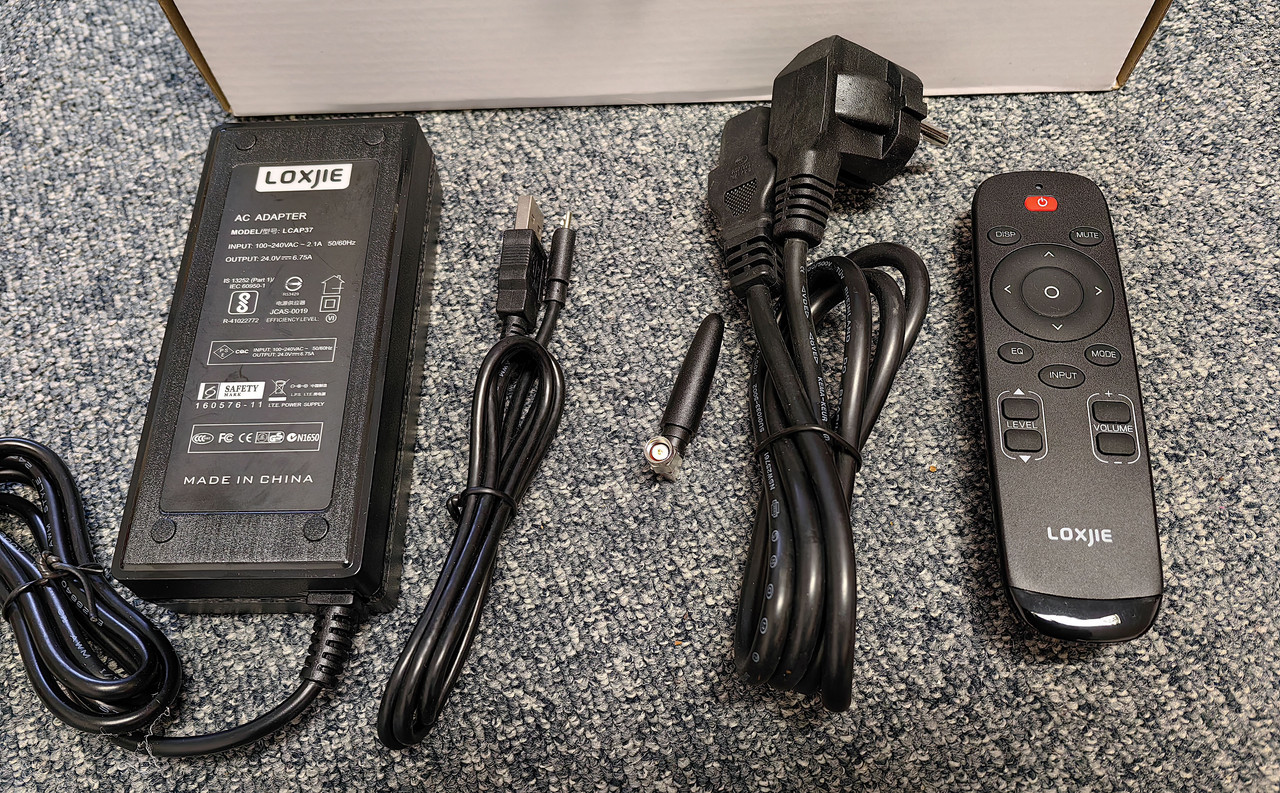
As expected, the instruction manual (English/Chinese) can only be called "basic". Very basic. Inadequate, really.
The design of the unit itself is sleek and modern. On the front you get the multi-colour IPS display, the headphone output and one single knob that controls not only the volume but all the menu options, too.
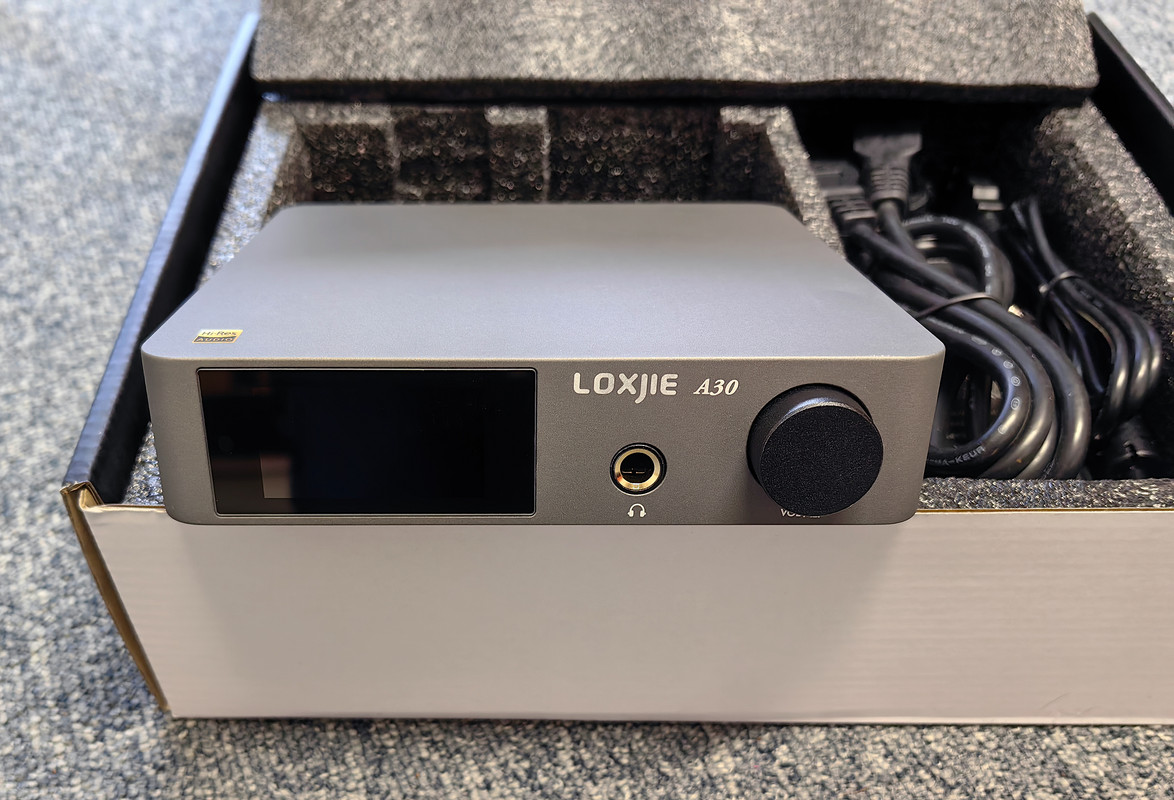
The medium-grey matte finish is flawless, and the manufacturing quality excellent considering the modest asking price.
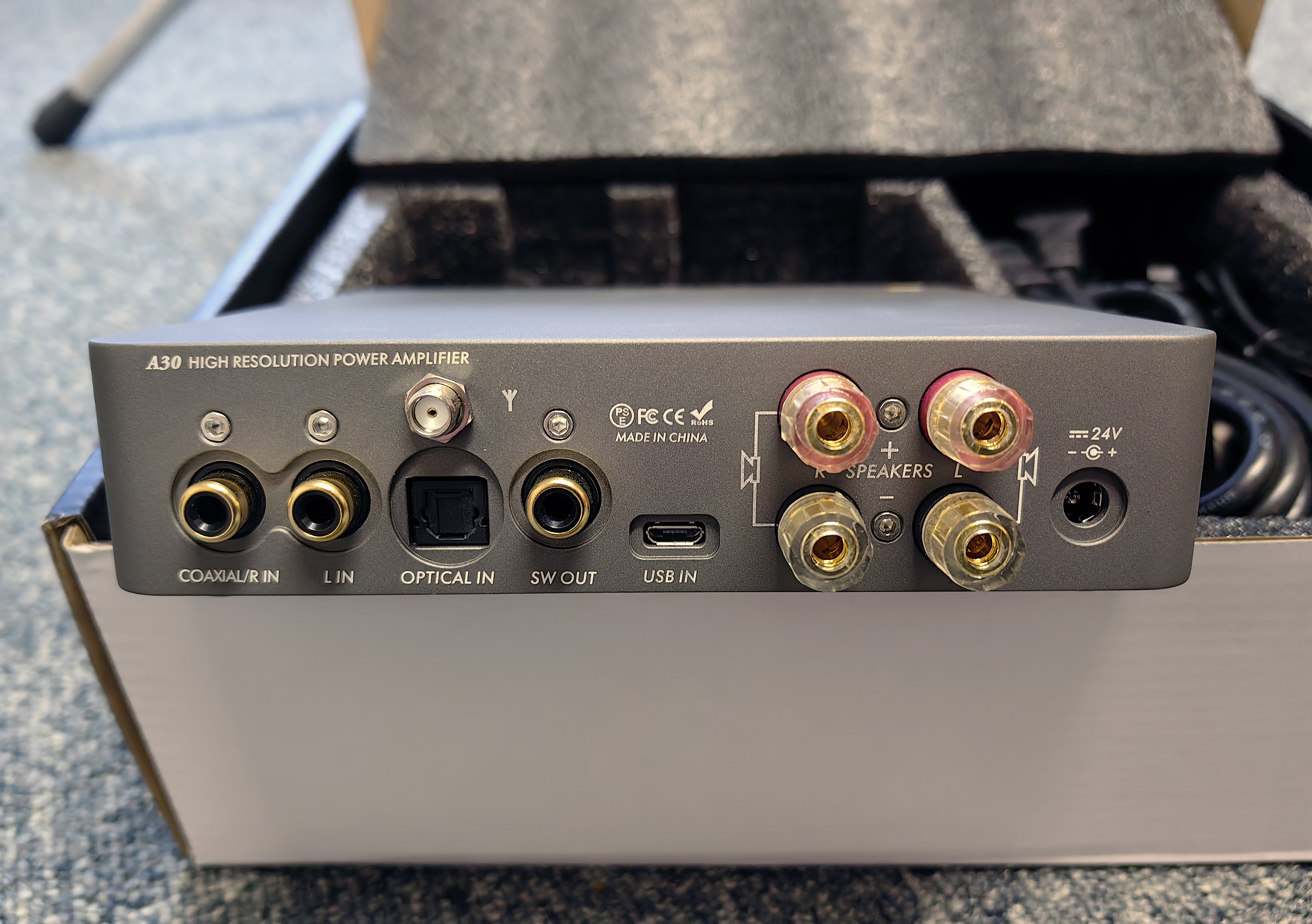
The inputs on the back are cleanly laid-out. The stereo connections for the speakers are best served with banana plus as the posts can only take speaker cables up to 2.5mm in diameter. The RCA input on the left doubles as right channel analogue and coax. The line out for your active subwoofer is also connected via a single RCA output unlike the stereo jack on the Aiyimas. Which means I have to get an RCA Y-cable before I can hook up the A30 to my Elac sub.
Because the BT antenna is mounted at a right angle and cannot be swung out, it's imperative that you mount the antenna first, before plugging in any other connections.
The "laptop-style" power supply is supposed to deliver 24V / 6.5A, but a review here on Audio Science Science Review (https://www.audiosciencereview.com/...oxjie-a30-amplifier-review.17547/#post-569056) suggests that it delivers much less. If I decide to keep the Loxjie I might need to get a higher-quality power supply that delivers power as advertised.
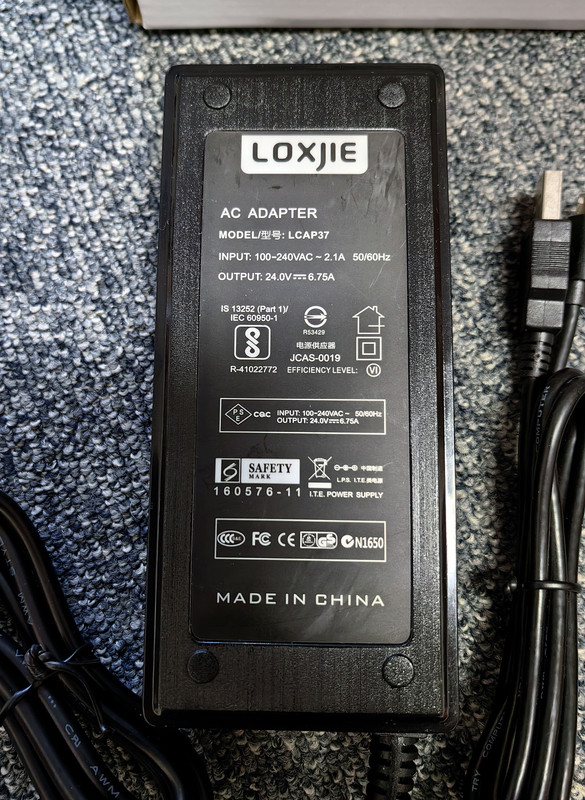
Once you've mounted the BT antenna, the remaining set-up is easy-peasy. My other devices occupy all the existing connections, RCA analogue (CD Player by Brennan), and Toslink (LG BR Player and Wiim Mini streamer, so I'm using a Toslink splitter).
The Loxjie A30 is an integrated 2.1 stereo amplifier and a headphone amp (100mW max) with a built-in DAC (an ESS "Sabre" ES9023) which delivers hi-res audio. The unit cannot be turned off completely, but it needs only 0.5W in standby. Not a big issue.
The IR remote included is nicely laid-out and feels decent. I don't think the "Level"-buttons on the bottom right have any function at all though. The range of the IR is vedry good indeed, and its frequency doesn't overlap with my other devices, including my Samsung TV.
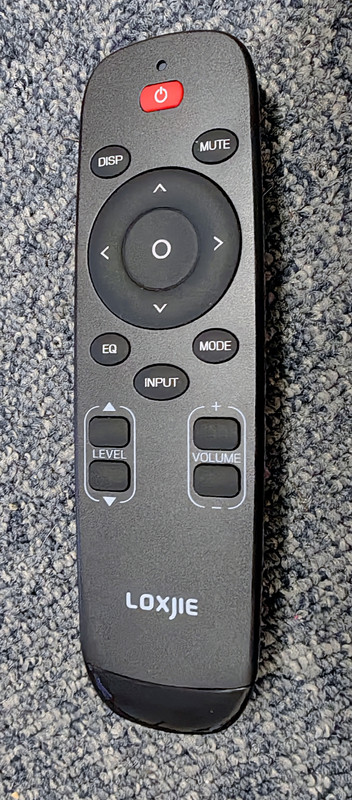
Both the front knob and the remote cover all of the unit's functions.
The IPS display comes in very handy, as it is big enough for you to see the current input from 6 feet and more away. If you dig into the menu, you'll have to move closer to the unit.
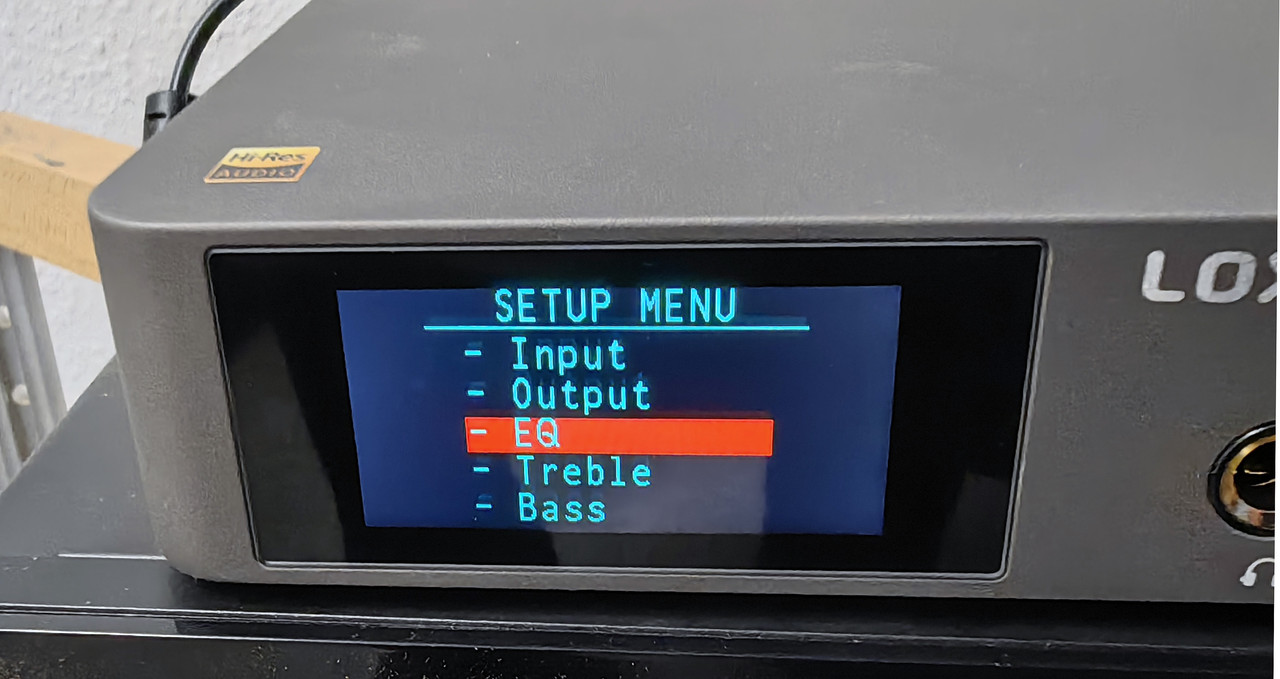
The "EQ" function includes several different DSP modes: Direct, Bass, Super-Bass, Rock, Soft, Tone and Clear.
You can only in- or decrease bass and treble in the TONE mode (+/- 10db in 1db steps). If you do, the unit automatically switches to the TONE mode. Sadly, there is no full EQ to manipulate different frequencies. Up close, the menu display is clear, the layout simple and streamlined.
All the settings will be saved if you put the Loxjie in Standby, and you can set the volume for the speakers and the headphones separately!
The A30 is powered by an Infineon "Merus" MA 1270 chip (unlike the Texas Instruments chip used in the Aiyimas) which can deliver up to 80 watts per channel into 4 ohm speakers, or it could if the power supply were as strong as advertised.
My setup includes a pair of efficient Klipsch Reference RB-75 large bookshelves (97db sensitivity or thereabouts). The A30 is advertised mainly as a desktop amplifier, but I'm using it in my 20 sqm bedroom as a hifi amp. The volume ranges from 0 to 60, and at 25 the A30 already delivers a sound level that more than fills the room ("Zimmerlautstärke") from my TV via Toslink. I expect I have to dial it up quite a bit for my DVDs/BDs.
I'm planning to test the different DSP modes and inputs tonight, but for a final subjective verdict I'll have to wait until my new subwoofer cable arrives. Also, to test the headphone jack I need to locate (or buy) a 3.5mm to 6.35 adapter for my old AKG K271 Studio headphones. These past few years I've been using wireless headphones exclusively.
Out of the box, the Loxjie A30 sounds clean and punchy, with no discernible noise or hum coming from the speakers.
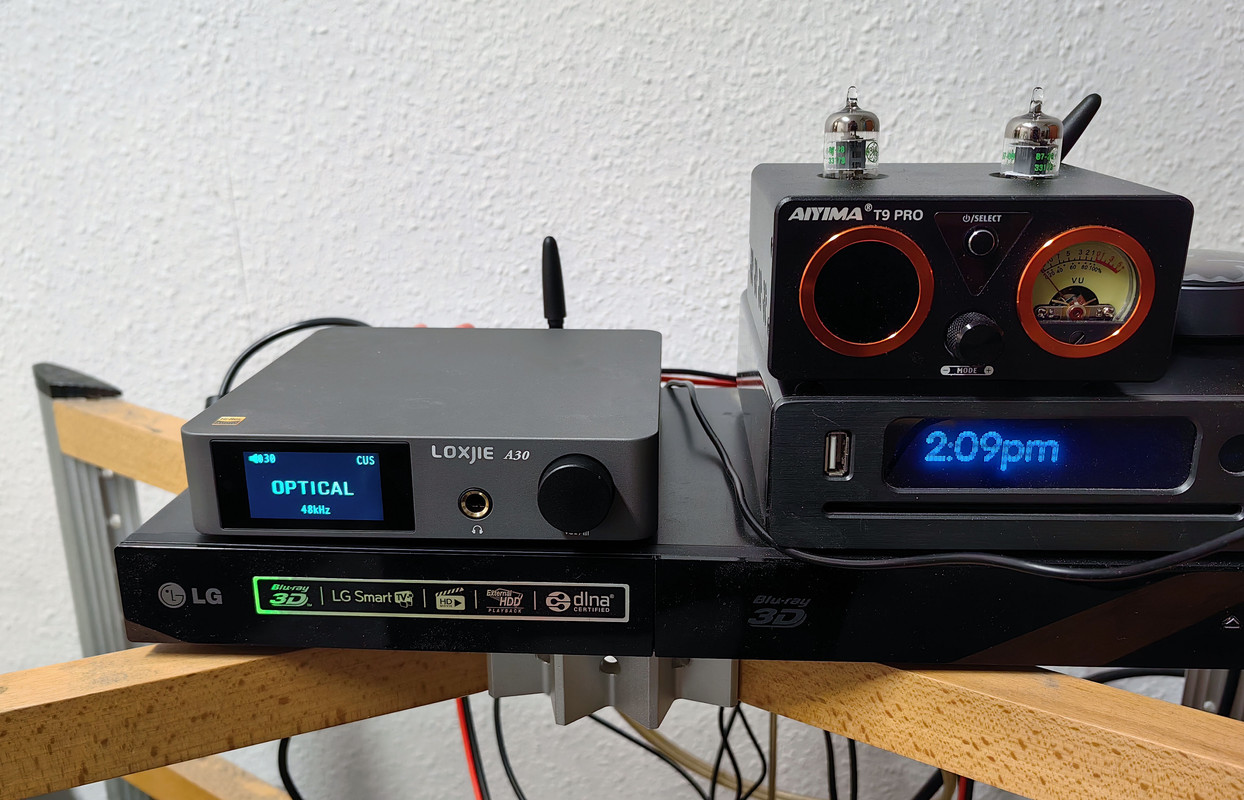
In practice, the A30 has one input less than the T9/T9 Pro, as the RCA analogue input and the coax cannot be used simultaneously. One of the RCA inputs is used for either coax or the analogue right channel. Never seen such an implementation before.
The amplifier arrives in a prosaic but sturdy box carton with the model name and a sketch of what the unit looks like. Inside there is a rubber foam filling with three compartments for the unit itself, one for the remote control, and one for the remaining accessories (mains adapter, USB-A to micro-USB cable for PC connection, and the BT antenna).


There are no audio cables included. Also (as usual), no AAA batteries for the remote control.

As expected, the instruction manual (English/Chinese) can only be called "basic". Very basic. Inadequate, really.
The design of the unit itself is sleek and modern. On the front you get the multi-colour IPS display, the headphone output and one single knob that controls not only the volume but all the menu options, too.

The medium-grey matte finish is flawless, and the manufacturing quality excellent considering the modest asking price.

The inputs on the back are cleanly laid-out. The stereo connections for the speakers are best served with banana plus as the posts can only take speaker cables up to 2.5mm in diameter. The RCA input on the left doubles as right channel analogue and coax. The line out for your active subwoofer is also connected via a single RCA output unlike the stereo jack on the Aiyimas. Which means I have to get an RCA Y-cable before I can hook up the A30 to my Elac sub.
Because the BT antenna is mounted at a right angle and cannot be swung out, it's imperative that you mount the antenna first, before plugging in any other connections.
The "laptop-style" power supply is supposed to deliver 24V / 6.5A, but a review here on Audio Science Science Review (https://www.audiosciencereview.com/...oxjie-a30-amplifier-review.17547/#post-569056) suggests that it delivers much less. If I decide to keep the Loxjie I might need to get a higher-quality power supply that delivers power as advertised.

Once you've mounted the BT antenna, the remaining set-up is easy-peasy. My other devices occupy all the existing connections, RCA analogue (CD Player by Brennan), and Toslink (LG BR Player and Wiim Mini streamer, so I'm using a Toslink splitter).
The Loxjie A30 is an integrated 2.1 stereo amplifier and a headphone amp (100mW max) with a built-in DAC (an ESS "Sabre" ES9023) which delivers hi-res audio. The unit cannot be turned off completely, but it needs only 0.5W in standby. Not a big issue.
The IR remote included is nicely laid-out and feels decent. I don't think the "Level"-buttons on the bottom right have any function at all though. The range of the IR is vedry good indeed, and its frequency doesn't overlap with my other devices, including my Samsung TV.

Both the front knob and the remote cover all of the unit's functions.
The IPS display comes in very handy, as it is big enough for you to see the current input from 6 feet and more away. If you dig into the menu, you'll have to move closer to the unit.

The "EQ" function includes several different DSP modes: Direct, Bass, Super-Bass, Rock, Soft, Tone and Clear.
You can only in- or decrease bass and treble in the TONE mode (+/- 10db in 1db steps). If you do, the unit automatically switches to the TONE mode. Sadly, there is no full EQ to manipulate different frequencies. Up close, the menu display is clear, the layout simple and streamlined.
All the settings will be saved if you put the Loxjie in Standby, and you can set the volume for the speakers and the headphones separately!
The A30 is powered by an Infineon "Merus" MA 1270 chip (unlike the Texas Instruments chip used in the Aiyimas) which can deliver up to 80 watts per channel into 4 ohm speakers, or it could if the power supply were as strong as advertised.
My setup includes a pair of efficient Klipsch Reference RB-75 large bookshelves (97db sensitivity or thereabouts). The A30 is advertised mainly as a desktop amplifier, but I'm using it in my 20 sqm bedroom as a hifi amp. The volume ranges from 0 to 60, and at 25 the A30 already delivers a sound level that more than fills the room ("Zimmerlautstärke") from my TV via Toslink. I expect I have to dial it up quite a bit for my DVDs/BDs.
I'm planning to test the different DSP modes and inputs tonight, but for a final subjective verdict I'll have to wait until my new subwoofer cable arrives. Also, to test the headphone jack I need to locate (or buy) a 3.5mm to 6.35 adapter for my old AKG K271 Studio headphones. These past few years I've been using wireless headphones exclusively.
Out of the box, the Loxjie A30 sounds clean and punchy, with no discernible noise or hum coming from the speakers.

